They Never Happened – part IV

For the fourth installment of the popular “They Never Happened” series, we again imagine the outcome of fights that either didn’t happen or couldn’t have happened because the combatants fought at different times. To give their thoughts on these 10 mythical matchups pitting boxing’s best against each other we have RingTV.com Editor Doug Fischer along with noted boxing historians Lee Groves, author of Tales from the Vault, and Cliff Rold of BoxingScene.com.
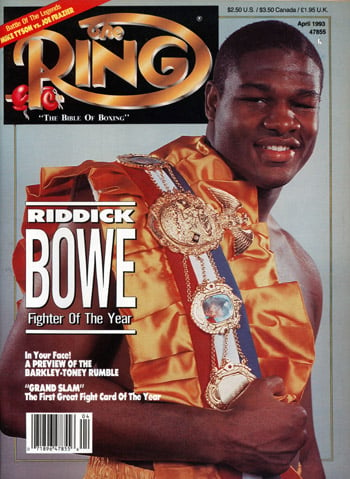 Larry Holmes vs. Riddick Bowe
Larry Holmes vs. Riddick Bowe
Setting the scene – Holmes came along right after Muhammad Ali as the next dominant heavyweight. It took a long time for him to earn the respect of fans and media alike but he had very good boxing skills, a ramrod jab and could gut it out when needed. Bowe was very talented, boasted an impressive inside game, a very good chin and could box and punch with equal measure. Unfortunately, Bowe frittered away his prime and never achieved as much as he could have. This matchup assumes the best version of Bowe would show up. Each fighter would undoubtedly push the other in what would surely be an exceptional battle.
What would have happened?
Doug Fischer – Larry Holmes at his best, I think he outpoints Riddick Bowe. It’s a difficult style for Larry Holmes because Bowe is taller than he is and he had a very good jab and here’s another thing that’s fascinating: Both guys had been trained by Eddie Futch at different points. Bowe for most of his prime if not through out his entire career had Eddie Futch. Eddie Futch was very familiar with Larry Holmes’ style, he would have known ways to dissect or at least disrupt Larry. I think Riddick Bowe’s jab probably would have done more damage than any other punch to Holmes. But I think Holmes — better footwork, lighter feet — in his prime he had much quicker hands than Riddick Bowe and would get there first. I think if he could mix some lateral movement in there, which is how he fought, particularly when he was young and in his prime — I’m talking late 70’s, I’m talking the guy who fought Ken Norton — that guy could stick and move for 15 rounds and fight hard if necessary. Bowe had trouble with boxers; a lot of people forget about his fight when he was coming up with Tony Tubbs. Tubbs arguably beat him or it was a draw, real close. It was just ring generalship. It was the handspeed mixed with the movement that really gave Riddick Bowe trouble. Based on all that I’m going to go Larry Holmes by close unanimous decision.
Lee Groves – Holmes UD Bowe – The difference in this fight will be Holmes’ jab, movement, defense and mental strength. When Riddick Bowe fought Evander Holyfield the first time he was as good as he ever would be, but even then he was a very hittable target. Holmes, on the other hand, threw up his long arms while backing up to create a tough-to-penetrate fence. The Holmes who fought Earnie Shavers the first time around would carve circles around “Big Daddy,” then use his rapier jab to set the table for the rights that would follow. Bowe will absorb the blows well enough to go the distance, but he’ll lose on points.
Cliff Rold – Holmes could be contested when another man established the jab and Bowe had one of the best of his generation. Bowe also had inconsistent professionalism, was prone to fouls, and flat-footed. As good as his jab was, the Holmes jab was better and he had better feet. It would be a fine fight as both tended to find themselves in battles, but Holmes was mentally tougher, quicker, and harder to catch. Holmes by decision.
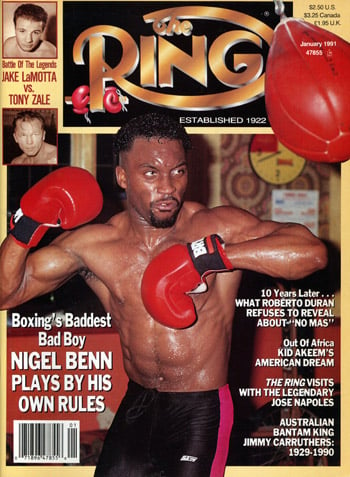 Nigel Benn vs. Carl Froch
Nigel Benn vs. Carl Froch
Setting the scene – The Battle of Britain, two heavy-handed fighters with big hearts. The press conference leading into the contest would be packed with fans and edgy, with each fighter getting under the other’s skin. Froch proved against Arthur Abraham that he can box when he needed to, showing a different angle than we were accustomed to seeing with him. It was the same with Benn: Early in his career he was a seek-and-destroy fighter, and when he became WBC 168-pound champion he developed his all-around game. But both would be wary of the other’s power.
What would have happened?
Doug Fischer – I think there’s a good window there for Benn to pull one of his blitz jobs and catch Froch earlier — you think of the George Groves fight where [Froch] got clipped hard in the first round, really hard. You think a finisher like Nigel Benn, he would have finished it. It would have been a first-round knockout but I take into consideration George Groves didn’t enter that first Froch fight with any sort of reputation the way “The Dark Destroyer” would have entered their fight. That would have been a superfight if both those guys were around at the same time. Carl Froch and Nigel Benn, that would have been a huge fight. Obviously it would have been the best, most focused version of Carl Froch possible. I still think Benn would hurt him early because Froch is there to be hit. But Froch is tough, he recuperates almost inhumanly, he’s got underrated versatility, he’s got underrated ring generalship — he’s not pretty with it, he looks kinda crude, but he’s actually a really smart boxer. I think he suffers some rough spots early and in the middle rounds and I think he comes on strong down the stretch. I think they go tit-for-tat in the middle rounds, I think it would be a really good fight. I think Froch would heap some punishment on Nigel Benn late in the fight and I think rounds 9-12 would belong to Froch and earn him a close decision.
Lee Groves – Froch UD Benn – The common denominator between these two is that they were able to pull off massive mid-career style changes. At 160 Benn was a madman’s madman as he fired nuclear bombs from all angles but once he rose to 168 he was a more complete fighter as he jabbed more and executed more thoughtful fight plans while still scoring his share of KOs. Froch was a gritty grinder who turned into a surprisingly effective long-range volume-puncher beginning with the Arthur Abraham fight. From that point forward he emphasized the jab more and relied more on science than sock. He also showed in the Kessler and Groves rematches that he can adjust his style to be more effective the second time around, which speaks well for his versatility. The early rounds will be key for Benn, for if he doesn’t hurt Froch then he’ll be out-boxed over the long haul. Froch’s chin, for most of his career, has been rock-solid and that asset will serve him well against “The Dark Destroyer.” He’ll take the early fire, then box his way to a points win.
Cliff Rold – Froch is as tough as they get, willing himself through technical deficiencies to be one of the most tested men of his time. In a test of chins, Froch comes out ahead but Benn was a bigger puncher with better speed. Theirs would be a testy battle with Froch always dangerous but Benn’s overall game would probably be enough to earn a late stoppage.

Miguel Angel Gonzalez
Miguel Angel Gonzalez vs. Jose Luis Castillo
Setting the scene – Both Gonzalez and Castillo were huge lightweights — boiling down to make 135 pounds was tough — and both put that advantage to good use. It would be fair to assume that this would have ended up in the trenches, with both men emptying their tanks in a hard-fought, all-action war of attrition.
What would have happened?
Doug Fischer – Good fight. Both guys at their best, it’s an interesting fight, it would have been a really good fight, a lot of technique. The edge in physical strength and durability, punching power I think goes to Castillo although Gonzalez at his prime at lightweight was a complete boxer who could fight and he had a terrific chin. I remember when he first stepped up to junior welterweight, he fought Oscar De La Hoya, who could really punch, particularly at lightweight and junior welterweight, and De La Hoya hit him with everything and he walked right through it — so Gonzalez could take a helluva shot. I don’t know how tough his body was. I look at him as the more talented boxer of the two. I’m going to go with Gonzalez by decision. I think Gonzalez had quicker hands, his combinations were a little more fluid, he could work the body as well as Castillo, he could do his work a little more from the outside and from mid range than Castillo. Castillo had good balance, very heavy hands, a lot of craft, working his way inside. Although Castillo also had a very underrated jab, which Floyd Mayweather found out about. Styles make fights, I don’t think Gonzalez would have necessarily had as much trouble as Mayweather had with Castillo because they’re different fighters. I don’t think he’d just be looking to punch on the fly and jab and one-two his way to victory the way Mayweather does. Gonzalez would have stood in there long enough in spots. Gonzalez was a good looking guy, he was boyish looking but he was tough, he could take a great punch. I don’t see either guy wearing the other down, not when they were in their primes. Gonzalez by clear but close unanimous decision in a good fight.
Lee Groves – Jose Luis Castillo UD Miguel Angel Gonzalez – This fight will be a classic Mexican vs. Mexican infighting war between two wear-you-down battlers. Despite their excellent KO percentages they tended to tire opponents over time and both could take it as well. Castillo’s slightly superior overall strength will be the difference in a hard-fought, competitive contest.
Cliff Rold – Gonzalez was a good, solid, steady fighter with a punch and some decent boxing ability. He struggled against better opposition, something Castillo was. Castillo beat better fighters than Gonzalez at his lightweight peak and ran Floyd Mayweather hard. He did it with a smart jab and educated pressure. It would have been slow to start, but Castillo would have ground Gonzalez down for at least a decision win.
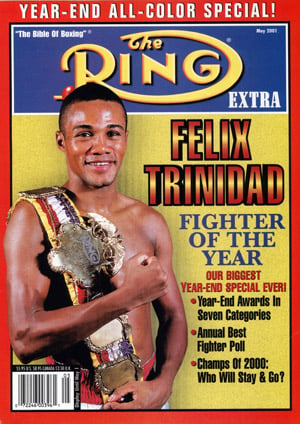 Felix Trinidad vs. Miguel Cotto
Felix Trinidad vs. Miguel Cotto
Setting the scene – Trinidad and Cotto both were blessed with great offenses, although both could be hurt. Both are revered in their homeland, though it would be fair to say “Tito” would be the more popular because of his charisma and more personable nature, while Cotto remains more stoic. Had it taken place in Puerto Rico it would have sparked tremendous scenes on the boxing-crazy island; alternatively, if it took place in New York at Madison Square Garden or even Yankee Stadium, a similarly energized crowd would assemble. Regardless, Puerto Rico would come to a standstill, the island split on who they wanted to win. Neither fighter would back down, knowing national bragging rights to be on the line.
What would have happened?
Doug Fischer – That would be huge if they fought at the same time, and they met at welterweight. It would be the biggest fight in Puerto Rican history, Puerto Ricans would lose their minds. I know for a fact because I covered both guys — “Tito” would be the crowd favorite. I think Cotto gets his head cut off! I love Cotto and Cotto is the more versatile boxer — he can stick and move, he can box going backwards, that’s not something Trinidad could do. Trinidad could stick and move a little bit but he never had to. Let’s say Cotto went about fighting Trinidad the way he fought (Antonio) Margarito, who was tall and rangy, I don’t think he would be able to do it as effectively against “Tito” because “Tito” had a nice sharp jab, which Margarito really didn’t have. “Tito” was a threat from long range with his straight right and his jab, mid-range he was deadly with that left hook. I really feel like it would almost be like the (Manny) Pacquiao fight, even though Pacquiao is a totally different fighter to Trinidad. I just think at some point in the first four rounds “Tito” would connect, probably with a hook, and the moment he connects with a hook I don’t think Cotto would recover, if he got up at all. I like Trinidad by mid- to late-round stoppage. I think he’s the better sharpshooter and the better puncher overall.
Lee Groves – Trinidad KO Cotto – In terms of offensive firepower, Trinidad had it all. He could box at long range, detonate explosives with either glove and fire deadly combinations once he hurt his opponent. His only shortcomings were his chin, especially in the early rounds, and, as Winky Wright and Oscar De La Hoya showed, his vulnerability against the jab. Cotto has always had a good jab, a crushing left hook and a deep reservoir of patience. However, he will face deficits of four inches in height and five-and-a-half inches in reach, which limits Cotto’s options on offense. With more ways to win, “Tito” should get the job done with an out-of-the-blue fireworks display.
Cliff Rold – The most accomplished Puerto Rican battlers since Hector Camacho, both won titles in multiple classes. Cotto is the sort of grounded, fundamentally sound pro who can hang with almost anyone, win or lose. His flaws have always been a lack of defense and an iffy chin. Trinidad’s left hook, and height and reach edge, would make him all wrong for Cotto. Trinidad might have come off the floor early; it was a habit. When he did, he would have knocked Cotto silly.
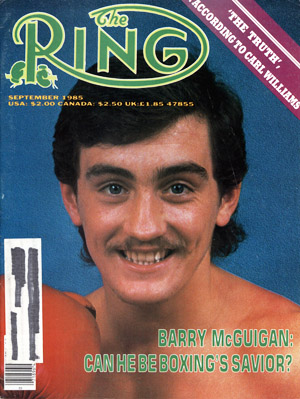 Barry McGuigan vs. Naseem Hamed
Barry McGuigan vs. Naseem Hamed
Setting the scene – In the mid 1980s Barry McGuigan brought Ireland together — Protestant or Catholic, it didn’t matter. He did so by winning and defending the WBA featherweight title. A decade later, Hamed, an unorthodox, cocky boxer-puncher emerged and entered the fray. Love him or hate him, you you tuned in to watch. Hamed brought attention and higher purses to the lower weight divisions at a time when neither received them. These men had vastly different fighting styles as well as contrasting personalities. This would have been huge in the U.K.
What would have happened?
Doug Fischer – I like McGuigan. I think McGuigan pulls a Marco Antonio Barrera and does what I think would have happened if Hamed would have fought Juan Manuel Marquez. I think a better technician, a guy who has boxing fundamentals and sticks to it and doesn’t get sucked into the “Prince’s” antics, doesn’t get overly aggressive, doesn’t get frustrated or angry and tries to go for Hamed … that’s how he knocked a lot of guys out — he suckered them in, he either got hurt first legitimately or maybe played possum a little bit and lost his balance because he was so ridiculously unorthodox and awkward, the guys thought they had him and then he would nail ’em with a crazy off-balance punch that had incredible power to it. But McGuigan was such a well controlled fighter and so old school, his fundamental technique was also textbook. I see him doing what Barrera did; McGuigan was a very smart guy, very smart boxer. People forget how big he was, how tall and rangy he was for that weight class. I think he does a lot of damage with his jab and right hand alone. I like McGuigan in that one, McGuigan on points.
Lee Groves – Hamed KO McGuigan – Talk about a contrast in styles! McGuigan was a textbook predator who used his freakishly long reach to snap jabs, his deadly left hooks to flatten opponents and an unpredictable bob-and-weave to avoid punches while storming inside. Hamed was the epitome of unorthodox. At his best, the “Prince” was a whirling dervish of bizarre angles executed at incredible speed and also one of the hardest-hitting featherweights ever to walk the earth. His chin, however, was reachable, especially when he stepped up the competition, and McGuigan would represent a big step up. That said, the difference will be Hamed’s combination of speed, power and unpredictability, which will leave “The Clones Cyclone” bedazzled and eventually defeated.
Cliff Rold – McGuigan was a bit of a folk hero in Northern Ireland and proved he could fight, but his attack was orthodox and Hamed was anything but. One of the hardest punchers in history, Hamed’s greater speed would take advantage of McGuigan’s pressure for a knockout win.
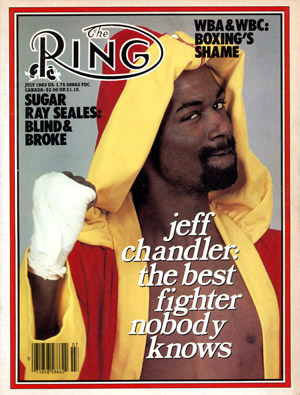 Jeff Chandler vs. Orlando Canizales
Jeff Chandler vs. Orlando Canizales
Setting the scene – An interesting pairing, both were very sturdy 118-pounders. Chambers was blessed with good size for the weight, excellent jab and above average power that often carried into the later rounds. Canizales was the sort of fighter who didn’t appear exceptional in any one area, however, the sum of his abilities combined made him a well-rounded boxer-puncher capable of giving anyone a hard night. Interestingly, Chandler beat Canizales’ older brother, Gaby, in 1983.
What would have happened?
Doug Fischer – Wow, that’s a tough fight, a tough fight to figure out. To me, the key for Canizales would be to get past that jab and get inside because once Canizales was inside he was brilliant. He would punch at angles, he would pivot, he had really good footwork in close, he would switch position on guys and punish their bodies, he was very accurate and he could defend well in close. Chandler wasn’t a bad infighter either but obviously with his reach — he had a really long reach for a bantamweight, his wingspan was a little over 71 inches, so clearly it was smart for him to be a stick and move fighter — it was hard for guys to get past his jab. It would have been a good fight because Chandler’s a Philly fighter, he’s not going to back away from a fight, and Canizales was just a punishing master in close — that guy was something else, a really underrated craft when he was in there working in the trenches — but I think Chandler would score a lot of points with his jab. He had good footwork, he was in great condition, just like Canizales was. That would have been a good 15- or 12-round fight. I know that Canizales was getting up there when he fought Junior Jones at 122 pounds and not 118 and I also know Gabe Canizales is not Orlando Canizales, but Chandler fought Gabe and he was the better man in that fight. But Gabe was kind of like Orlando, just not as good, and I would say Chandler was a little bit better than Junior Jones was and Junior Jones was tall and rangy, a guy who worked everything off his jab, had good power. It’s a toss up fight but I think I like Chandler by close, maybe split decision.
Lee Groves – Chandler SD 12 Canizales – Of all the matches presented here, this is the most difficult to gauge. The 5-foot-7 Chandler was an unusually tall bantamweight who knew how to maximize his jab while more than holding his own at close quarters. The three-inches shorter Canizales, like Chandler, had every punch in the book, was a better body-puncher and was an expert at using angles, especially with his feet, to set up his punches. Both also were pinpoint punchers who delivered their blows with above-average speed and power. In a very tough, close fight Chandler’s height and reach will afford him the room to score more blows over the long haul and eke out a razor-thin decision.
Cliff Rold – Chandler at his peak was a gifted professional who took on many of the best bantamweights of his day. Canizales was statistically impressive but his opposition often lacked. Chandler at his best was too fast and had enough punch to win a decision over Canizales.
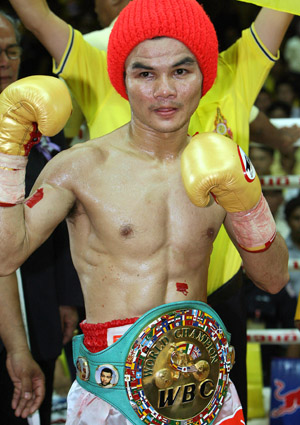
Pongsaklek Wonjongkam
Muangchai Kittikasem vs. Pongsaklek Wonjongkam
Setting the scene – Kittikasem made a name for himself in the late 1980s and early ’90s, initially at 108 pounds before unseating his countryman Sot Chitalada at flyweight. Kittikasem knew what it was like to fight a fellow Thai in a big world-title fight but was also capable of winning on the road, as he did most notably against Hall of Famer Jung-Koo Chang. Kittikasem tended to be either brilliant or average, whereas Wonjongkam is the model of consistency, reigning for much of the 2000s. All told, Wonjongkam took part in 26 world title fights and will be remembered as one of the best flyweights in history.
What would have happened?
Doug Fischer – Two great Thai flyweight champs for different reasons. Wonjongkam because of his amazing consistency, that long unbeaten streak that he had. Kittikasem, he was an action hero, he had good technique too. He came from that kickboxing background but he was there to fight, he was there to out-will guys. He was the taller, rangier guy but I think I like Wonjongkam because he is the more consistent boxer, his technique was more controlled, he paced himself better and I think he was a southpaw with a high guard and I think he would block a lot of the hooks and crosses from Kittikasem. And he would counterpunch really well; he would throw a short punch in return to the chest, the body, the jaw. He would be the neater boxer in there. I think he would land the cleaner punches and I think it would be a close decision fight for Wonjongkam, but I think Kittikasam would be in the fight because of his aggression and maybe because of his activity.
Lee Groves – Wonjongkam UD Kittikasem – Kittikasem is the more dangerous puncher shot-for-shot but his performance level tended to rise and fall dramatically. When he’s on, he’s spectacular but when he’s off he suffers greatly. Wonjongkam, on the other hand, is a more complete fighter who fights steadily and consistently. His left-handed stance will help his cause as well. I envision Wonjongkam nipping in-and-out with point-scoring combos and Kittikasem missing with singular power shots throughout the bout, enabling Wongjongkam to score a solid points win.
Cliff Rold – Kittikasem made some fun fights with Michael Carbajal, Chang, and Arbachakov, losing most of them. Wonjongkam at his best was exceptionally fast, smart, and had power when he needed it. Wonjongkam would do enough to outpoint Kittikasem in a crowd-pleaser.
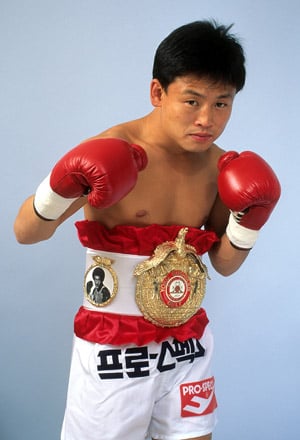
Myung-Woo Yuh
Jung-Koo Chang vs. Myung-Woo Yuh
Setting the scene – Arguably the two best South Korean boxers of all time, both reigned supreme at the same time in the junior flyweight division in the early 1980s. Each man would enter the Hall of Fame — Yuh in 2010 and Chang in 2013. Yuh made a division record 17 defenses of his title while Chang reigned for five years and made 15 defenses. The Koreans were so proud of both they would have hated to see them fight, because one guy had to lose.
What would have happened?
Doug Fischer – These guys were known only to super hardcore fans. They both had these incredibly long title reigns at 108 pounds. They defended against really good fighters, they fought some good Japanese and South American and sometimes Mexican fighters. The quality of opposition Chang faced was a little bit better — he fought Chiquita Gonzalez and lost, Kittikasem, he fought Sot Chitalada, Hilario Zapata. Both guys were very good ring generals, they both had good jabs, they could move about the ring. I think Chang had the edge in physical strength, punching power, and Yuh had the edge as a fluid boxer — he was lighter on his feet, I think he was quicker. It’s a distance fight, definitely, hotly contested throughout. I think it’s a toss-up. It might have been a split or majority decision but I think Chang would win because he would land the harder punches and be more aggressive than Yuh, who could be aggressive but I don’t think he had the physical strength to really get as much done when he would take it to his opponents. I think Chang would take more chances and I think the judges would reward him for that. I like Chang by majority or split decision in a tremendous fight.
Lee Groves – Chang UD Yuh — Yuh wasn’t the prototypical South Korean fighter in that he banked on volume-punching and effective defensive skills to pile up a record-setting 17 consecutive defenses at 108 and 18 defenses overall. His KOs were more a product of sharp, consistent punching than brute force. And speaking of brute force, that’s what the later version of Chang epitomized. Early in his career he boxed well but as time went on he became a mauling, brawling bully who clubbed his opponents from first bell to last. I don’t think Yuh would have had the firepower to stop Chang’s advances for the entire fight. Once Chang’s attrition takes hold Yuh will lose ground and, ultimately, the decision.
Cliff Rold – The best junior flyweight fight we never saw. Boxer versus swarmer. Yuh was a beautiful combination puncher. Chang was an offensive torrent and overall beat the better opposition. In a series, Yuh might solve him. For one night only, the “Korean Hawk” would have been too much and earned a decision or late knockout.
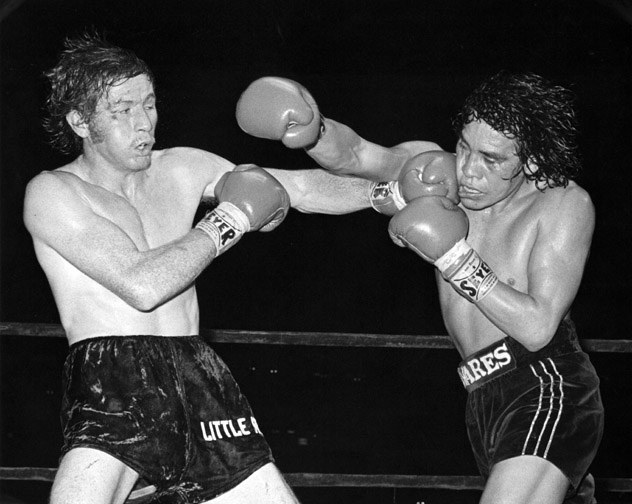
Ruben Olivares (R) vs. Danny Lopez
Ruben Olivares vs. Carlos Zarate
Setting the scene – A meeting of two of the best bantamweights in history. Both are among the greatest punchers in the division’s long history, and thus both would be weary of the other’s power. One mistake and this fight would likely be over. The only guarantee here is that it doesn’t go the distance.
What would have happened?
Doug Fischer – Wow, that would be insane. That would be a Mexican holiday. I like Olivares, at his best just a more versatile fighter, Zarate more a search-and-destroy guy with great technique and awesome power. Olivares had that awesome power but was more talented, he was a natural boxer, a fighter who could stick and move and do wonderful things on the inside. Maybe he was a little smarter than Zarate. That fight would have been crazy, I can see both guys getting hurt, both guys getting knocked down. Ultimately I see Olivares winning a decision or a late stoppage.
Lee Groves – Zarate KO Olivares – This fantasy match would have lived up to all the hype — and then some. Olivares and Zarate were destructive forces at 118, as virtually all of their matches ended inside the distance and they weren’t afraid to swap leather when necessary. Later in his career Olivares proved himself vulnerable against tall, willowy punchers like Danny Lopez and Alexis Arguello and Zarate, at 5-foot-8, certainly fits that bill. Also, Zarate could box at long range when needs be and he sported a much more durable chin. Thus, Zarate will weather whatever firepower Olivares produces early, then score the left-hook KO sometime in the middle rounds.
Cliff Rold – Olivares could be reckless but at his best was a tornado of punishing offense. He was unlike anything Zarate saw. This fight would look a lot like Zarate-Wilfredo Gomez, if a little longer. Olivares eventually runs him over.
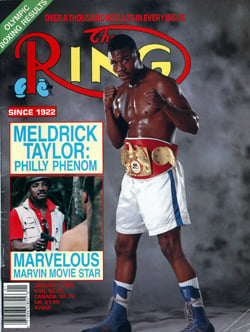 Pernell Whitaker vs. Meldrick Taylor
Pernell Whitaker vs. Meldrick Taylor
Setting the scene – Two terrifically skilled speedsters who were on the same highly successful 1984 Olympic team. Each would know the other very well from their time in the amateurs. It would have been interesting to see how each man would have dealt with the other’s superlative skills.
What would have happened?
Doug Fischer – I like Whitaker by decision. I think it would be competitive but Whitaker was the better ring general, he had the better timing and obviously the better defense, he was able to incorporate his offense with his defense with movement in ways Meldrick Taylor couldn’t, but Meldrick Taylor would have been difficult for Whitaker because his speed was so off the chart and he was really a volume puncher in spots, if that makes any sense. Usually with volume punchers we’re talking about guys who press all the time, just throwing punches all the time, like a Margarito or a Joe Frazier, but Taylor got off in explosive bursts and he would drop these combinations that were unreal. He was crazy quick, like a hummingbird. It was really just too many punches because once you get past four-punch combinations you’re really sticking around too long to drop those extra two or three punches but Taylor would do six- and eight-punch combination punches routinely when he was in his prime. He was there to get hit in return because you have to plant your feet to do it but he could do it really quickly. For me, the edge Taylor would have on Whitaker would be the handspeed and Whitaker wasn’t used to being the slower guy, also the combination punching. One of the things that beats superb boxers and even defensive geniuses is sheer volume and speed is just another factor there. It would be engaging; you’re never going to have a Fight of the Year with a Whitaker type. I think Taylor would have had his spots, his moments, in a 12-round fight. There wouldn’t be any knockdowns, there definitely wouldn’t be a knockout. I think Whitaker was a better overall fighter, his jab would have been consistent, he would have worked the body, he would have got inside, he would have attacked at angles, and I think he would get more work done over 12 rounds.
Lee Groves – Whitaker UD Taylor – These two were teammates on the 1984 U.S. Olympic team that captured nine gold medals, plus they were also in the same stable. The latter circumstance, as well as their friendship, kept this fight from happening. But as is usually the case with fights between friends, this would be a magnetic scrap. Attitude and consistency would be the difference here. On the one hand, Whitaker knew what he was — a pure boxer — and he didn’t care that the crowd booed his tactics. He just piled up points and racked up dominant decision wins. Taylor, meanwhile, fed off the crowd’s cheers and he was prone to peaks and valleys in his performance. Whitaker maintained a clinical cool while Taylor always seemed caught between being a boxer with supersonic hand- and foot-speed or a classic Philadelphia slugger. That confusion will prove fatal against Whitaker. Whitaker crafted his Hall of Fame career by out-foxing fighters who came at him and that’s what will happen here. “Sweet Pea’s” southpaw stance, his defensive wizardry and his tactical genius will trump Taylor’s blazing hand speed and his fierce Philadelphia temperament en route to a decision victory.
Cliff Rold – As quick as Taylor was, he was defensively flawed and too game for his own good. Whitaker might have been the smartest fighter and one of the best body-punchers of his era. His jab, footwork, and countering ability would have exploited Taylor badly. If gym legends are to be believed, they did in sparring without the cameras rolling.
They Never Happened I http://www.maxboxing.com/news/max-boxing-news/they-never-happened
They Never Happened II https://www.ringtv.com/news/180917-they-never-happened-part-ii
They Never Happened III https://www.ringtv.com/news/378925-they-never-happened-part-iii
Questions and/or comments can be sent to Anson at [email protected] and you can follow him at www.twitter.com/AnsonWainwright.















